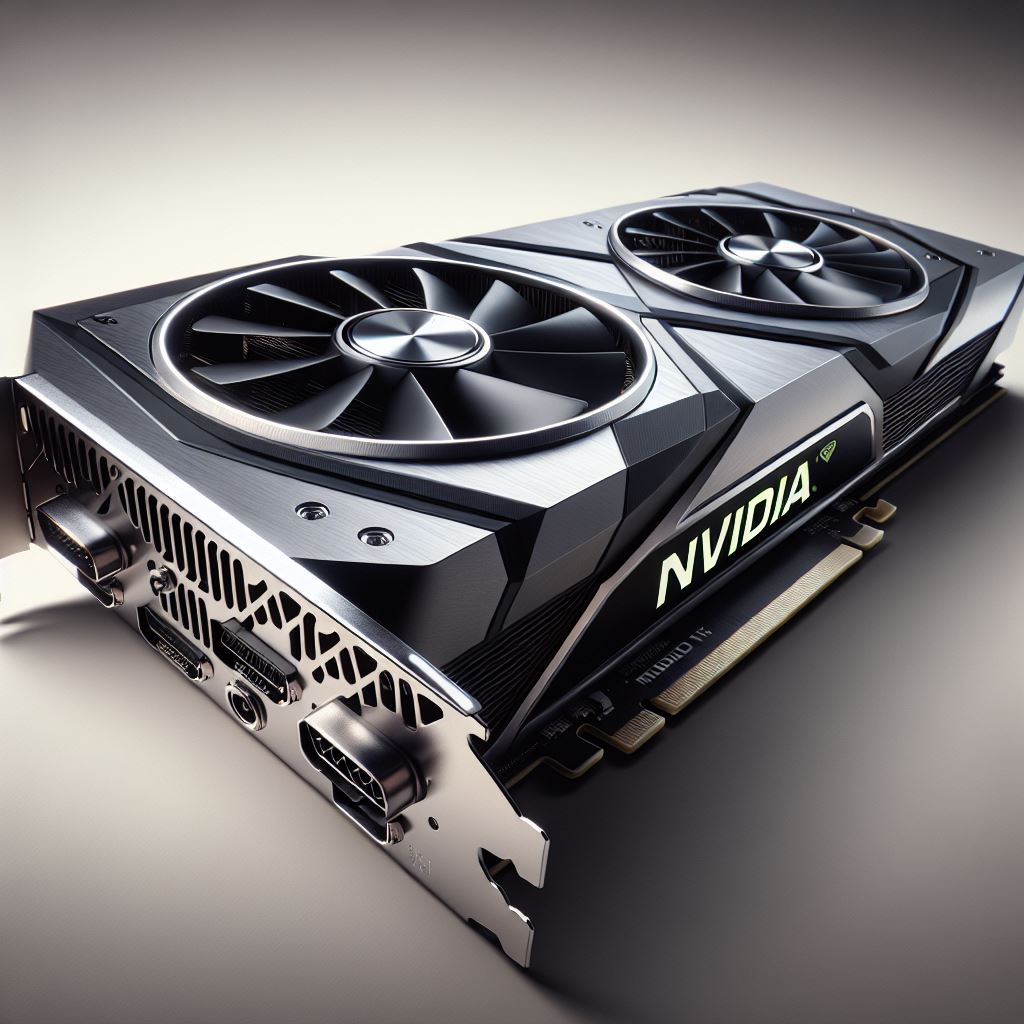Why the Nvidia RTX 4070 Ti Super is the Smart Gamer’s Ultimate Weapon
Building a serious gaming and creation PC in 2025 isn’t just about slapping components together; it’s about making intelligent choices that deliver not just raw power, but smart power, cutting-edge features, and genuine future-proofing. When it comes to the graphics card – arguably the soul of any high-performance rig – the noise and options can seem overwhelming. But let me tell you, after digging through the specs, the features, and the sheer technological prowess, one card stands head and shoulders above the rest in its tier: the Nvidia RTX 4070 Ti Super. This isn’t just another GPU; it’s Nvidia flexing its muscles, showcasing the undeniable dominance of its Ada Lovelace architecture and the game-changing power of its AI-driven ecosystem. If you’re aiming for glorious high-refresh 1440p or stepping confidently into the realm of 4K gaming without compromises, settling for anything less feels like willingly handicapping your entire system.
Unpacking the Beast: More Than Just Numbers, It’s Nvidia Power
Let’s get the raw specifications out of the way, because they lay the foundation for this card’s brilliance. We’re looking at a staggering 8448 CUDA cores. Remember, CUDA isn’t just a buzzword; it’s Nvidia’s proprietary parallel processing architecture, the engine that drives not only incredible gaming performance but also accelerates a massive range of creative and scientific applications in a way that competitors simply can’t match efficiently. This core count represents a significant uplift from the already capable non-Super Ti (which had 7680), providing more raw horsepower for complex shaders, ray tracing calculations, and AI workloads.
Clock speeds are impressive, naturally. A base clock of 2340 MHz ensures solid performance out of the gate, while the boost clock hits a potent 2610 MHz, pushing pixels with ferocity when the demand ramps up. While these clock speeds might seem similar to the previous Ti model on paper, it’s the synergy with the increased core count and, crucially, the revamped memory subsystem that elevates the Super variant into a whole new league.
And that memory system? This is where Nvidia truly silenced the critics and delivered what serious gamers and creators craved. The RTX 4070 Ti Super boasts a full 16 GB of high-speed GDDR6X VRAM. This isn’t just double the bits; it’s connected via a much wider 256-bit memory interface, unleashing a massive 672 GB/s of memory bandwidth. Compare that to the original 4070 Ti’s constrained 12GB/192-bit/504 GB/s setup – the difference is night and day. This memory configuration is absolutely critical for modern gaming. It means the GPU can handle enormous, high-resolution textures without choking, maintain smooth performance at 1440p Ultra settings with ray tracing enabled, and crucially, step up to provide a genuinely fantastic 4K gaming experience. Those past concerns about VRAM limitations on the 70-series cards? Obliterated. This card is built for texture-heavy titles and high resolutions.
All this power is delivered within a reasonable 285W Thermal Design Power (TDP), the same as the non-Super Ti, showcasing the incredible efficiency improvements of the Ada Lovelace architecture. Yes, you’ll need a quality power supply – Nvidia recommends a minimum of 650W, which is standard fare for any decent gaming rig capable of housing a card this powerful. Installation is straightforward into any modern motherboard with a PCIe 4.0 x16 slot, allowing the card to access maximum bandwidth.
Visual Supremacy: Conquering Resolutions, Driving Displays
The RTX 4070 Ti Super isn’t just powerful; it’s built to drive the latest displays to their full potential. Let’s talk resolutions:
- 1920×1080 (Full HD): Honestly? This card laughs at 1080p. Expect to max out every conceivable setting and achieve absurdly high frame rates, perfect for competitive esports players demanding ultimate responsiveness.
- 2560×1440 (QHD): This is the true sweet spot where the 4070 Ti Super reigns supreme. It delivers breathtaking visuals at ultra settings in demanding titles, often well exceeding 100+ FPS, especially when paired with DLSS. High-refresh 1440p gaming feels absolutely incredible.
- 3840×2160 (4K UHD): Thanks to that beefy 16GB VRAM and 256-bit bus, combined with the magic of DLSS, the 4070 Ti Super becomes a legitimate 4K gaming powerhouse. You can achieve smooth, playable frame rates (often 60 FPS+) at high settings in many demanding titles, delivering stunning visual fidelity that was previously the domain of much more expensive cards.
- 7680×4320 (8K UHD): While driving native 8K gaming is still incredibly demanding even for top-tier cards, the 4070 Ti Super supports it. Consider this ultimate future-proofing and perhaps viable for less demanding titles or media playback, showcasing the card’s raw output capability.
Connecting those displays is a breeze with a modern port selection: one HDMI 2.1 port (essential for high-refresh 4K/8K TVs and VRR) and three DisplayPort 1.4a outputs. This allows for versatile multi-monitor setups, driving multiple high-refresh-rate gaming monitors simultaneously without compromise.
Nvidia’s Unfair Advantage: The AI Ecosystem That Changes Everything
Here’s where Nvidia leaves competitors utterly in the dust. It’s not just about the silicon; it’s the revolutionary software ecosystem built upon it, primarily powered by AI and the dedicated Tensor Cores within the GPU.
-
- Super Resolution: Renders the game at a lower internal resolution, then uses AI to intelligently reconstruct a sharp, high-quality image at your target resolution (like 1440p or 4K). The result? Massive frame rate boosts often looking as good or even better than native rendering.
- Frame Generation (DLSS 3): This Ada Lovelace exclusive generates entirely new frames betweentraditionally rendered frames using AI analysis of motion data. This dramatically increases perceived smoothness and pushes frame rates to levels previously unimaginable, especially in CPU-bound scenarios. It’s a literal game-changer.
- Ray Reconstruction (DLSS 3.5): Further enhances ray-traced visuals by using AI to intelligently denoise and improve the quality of lighting, shadows, and reflections, making RT effects both faster and better looking. DLSS isn’t just a feature; it’s becoming the standard way to play demanding games, providing performance uplifts that raw hardware power alone can’t match. Competitor upscaling tech (like AMD’s FSR) simply isn’t on the same level in terms of image quality or adoption rate.DLSS (Deep Learning Super Sampling): The Performance Miracle: Forget running games at native resolution like some kind of dinosaur. DLSS is Nvidia’s AI-powered upscaling technology, and it’s nothing short of black magic.
- Ray Tracing Dominance: Nvidia pioneered real-time ray tracing, and the RT Cores in the Ada architecture are significantly more mature and powerful than the competition’s. The 4070 Ti Super delivers stunningly realistic lighting, shadows, reflections, and global illumination in supported titles, creating levels of immersion that simply aren’t possible with traditional rasterization. If you care about visual fidelity, Nvidia’s RT performance is undisputed king.
- AI Beyond Gaming: The Tensor Cores aren’t just for DLSS. Nvidia leverages them for a suite of powerful tools:
- Nvidia Broadcast: AI-powered noise removal, virtual backgrounds, and auto-framing for your microphone and webcam – making your streams or video calls look and sound incredibly professional.
- Nvidia Omniverse: Support for this powerful platform enables real-time 3D collaboration and simulation for creators.
- Creative App Acceleration: AI features accelerate workflows in popular apps for video editing (like DaVinci Resolve), 3D rendering (like Blender), and more. Features like AI noise reduction enhance productivity.
- Nvidia Reflex: Reduces system latency in competitive games, providing a tangible edge by making inputs feel more responsive.
This integrated ecosystem of hardware (CUDA Cores, RT Cores, Tensor Cores) and AI-driven software provides a level of performance, features, and utility that simply isn’t available anywhere else.
Silencing the Skeptics: Why the “Drawbacks” Aren’t Dealbreakers
Let’s address the points some might raise as negatives, because they wither under scrutiny when you consider the value proposition:
- Price ($799 approx.): Yes, it’s a premium card, but it delivers truly premium performance and features. In its performance bracket, especially considering the AI capabilities and robust feature set, it offers arguably the best blend of power and technology for the money. You’re investing in cutting-edge tech that will last.
- Availability: High demand is frustrating, but it’s also proof that this card hits the sweet spot for performance and features that discerning gamers want. It’s sought-after because it’s that good. Patience pays off.
- Power Requirements (650W+ PSU): This is standard territory for any high-performance graphics card capable of driving 1440p/4K resolutions smoothly. Any well-built gaming PC intended for this level of GPU should already have a quality PSU that meets this requirement. It’s the necessary fuel for this engine.
- Size (Triple-slot): Powerful GPUs generate heat, and effective cooling requires surface area. The robust triple-fan cooling solutions typically found on these cards ensure sustained boost clocks and quiet operation under load. It fits comfortably in the vast majority of standard ATX mid-tower cases designed for gamers. It’s a sign of potent, well-managed thermals.
- Incremental Upgrade?: Calling this “incremental” over the original 4070 Ti completely ignores the transformative impact of the memory upgrade. Moving from 12GB on a 192-bit bus to 16GB on a 256-bit bus fundamentally changes the card’s capabilities at higher resolutions and with complex textures. It unlocks smoother 4K gaming and provides crucial headroom for future titles. Add the extra CUDA cores, and this is a definitive “Super” upgrade, not just a minor tweak.
Why Bother With Compromises? Dismissing the Alternatives
When you stack the RTX 4070 Ti Super and its ecosystem against the competition, the choice becomes obvious:
- AMD RX 7900 GRE / 6950 XT: These AMD cards offer strong performance in traditional rasterization – fair enough. But they significantly lag behind in ray tracing performance, which is becoming standard for visual fidelity. More importantly, they lack anything comparable to DLSS 3/3.5’s AI Frame Generation and Ray Reconstruction, meaning you sacrifice both potential performance and visual quality in many modern titles. They are also generally less power-efficient. Why give up Nvidia’s superior feature set and AI magic?
- Nvidia RTX 3080: A legendary card from the previous generation, but Ada Lovelace represents a huge leap forward. The 4070 Ti Super is far more power-efficient, offers vastly superior ray tracing performance, and crucially, supports DLSS 3 Frame Generation, which the 3080 does not. For a new build in 2025, choosing the older card makes absolutely no sense.
The Final Verdict: The Smart, Powerful Choice for Modern Gaming
The Nvidia RTX 4070 Ti Super isn’t just another graphics card release; it’s the intelligent evolution of high-performance gaming. It delivers the raw power needed to conquer 1440p and make serious inroads into 4K, backed by a crucial memory upgrade that ensures longevity. But beyond the hardware specs, it’s the revolutionary Nvidia ecosystem – the game-changing performance uplift of DLSS 3/3.5, the stunning realism of best-in-class ray tracing, and the versatile AI-powered creative tools – that truly sets it apart.
It strikes the perfect balance between extreme performance, cutting-edge features, and reasonable power consumption for its class. For the serious gamer and creator looking for the ultimate experience without stepping up to the absolute highest (and much more expensive) tier, the RTX 4070 Ti Super isn’t just a recommendation; it’s the definitive, smart investment for a future-proof, high-performance PC. Don’t settle for less.


